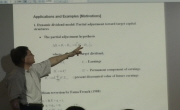Objective: To present an innovative, modified endoscopic approach for foraminal/extraforaminal pathologies, to reduce postoperative dysesthesia (POD) following the conventional transforaminal endoscopic approach (the access angle more than 45° from t...
http://chineseinput.net/에서 pinyin(병음)방식으로 중국어를 변환할 수 있습니다.
변환된 중국어를 복사하여 사용하시면 됩니다.
- 中文 을 입력하시려면 zhongwen을 입력하시고 space를누르시면됩니다.
- 北京 을 입력하시려면 beijing을 입력하시고 space를 누르시면 됩니다.



A Modified Endoscopic Access for Lumbar Foraminal Pathologies; Posterolateral “Intertransverse” Endoscopic Approach to Minimize Postoperative Dysesthesia Following Transforaminal Approach
한글로보기https://www.riss.kr/link?id=A108547346
-
저자
Farah N. Musharbash (Department of Orthopaedic Surgery, The Johns Hopkins Hospital) ; Sang Hun Lee (Department of Orthopaedic Surgery, The Johns Hopkins Hospital)
- 발행기관
- 학술지명
- 권호사항
-
발행연도
2023
-
작성언어
English
- 주제어
-
등재정보
KCI등재,SCIE,SCOPUS
-
자료형태
학술저널
-
수록면
150-157(8쪽)
- DOI식별코드
- 제공처
-
0
상세조회 -
0
다운로드
부가정보
다국어 초록 (Multilingual Abstract)
Methods: We introduce a modified posterolateral technique, termed the intertransverse approach, utilizing a steeper access angle less than 25° through the intertransversarii muscle and the intertransverse space with expanding Kambin triangle via lateral facetectomy/foraminoplasty, to reduce dorsal root ganglion/exiting nerve root irritation under direct visualization and lower the incidence of POD. Consecutive patients undergoing endoscopic spine surgery via the intertransverse approach for foraminal and/or extraforaminal disc herniations or bony stenosis were retrospectively reviewed. Clinical outcomes were reviewed with the primary outcome being POD.
Results: Twenty-two patients were included in the review. Patients showed significantly improved clinical outcomes (visual analogue scale leg and back pain and Oswestry Disability Index) postoperatively. There was a low rate of dorsal root ganglion (DRG)-related POD (9.1%, 2 of 22) that was minimal and resolved soon.
Conclusion: The inter-transverse endoscopic approach is feasible for lumbosacral foraminal and extraforaminal decompression with significantly improved clinical outcomes and the added advantage of a low rate of DRG-related POD compared to traditionally reported rates in the literature for the conventional transforaminal approach.
Objective: To present an innovative, modified endoscopic approach for foraminal/extraforaminal pathologies, to reduce postoperative dysesthesia (POD) following the conventional transforaminal endoscopic approach (the access angle more than 45° from the midline), since POD is one of the major documented disadvantages that may compromise patient satisfaction.
Methods: We introduce a modified posterolateral technique, termed the intertransverse approach, utilizing a steeper access angle less than 25° through the intertransversarii muscle and the intertransverse space with expanding Kambin triangle via lateral facetectomy/foraminoplasty, to reduce dorsal root ganglion/exiting nerve root irritation under direct visualization and lower the incidence of POD. Consecutive patients undergoing endoscopic spine surgery via the intertransverse approach for foraminal and/or extraforaminal disc herniations or bony stenosis were retrospectively reviewed. Clinical outcomes were reviewed with the primary outcome being POD.
Results: Twenty-two patients were included in the review. Patients showed significantly improved clinical outcomes (visual analogue scale leg and back pain and Oswestry Disability Index) postoperatively. There was a low rate of dorsal root ganglion (DRG)-related POD (9.1%, 2 of 22) that was minimal and resolved soon.
Conclusion: The inter-transverse endoscopic approach is feasible for lumbosacral foraminal and extraforaminal decompression with significantly improved clinical outcomes and the added advantage of a low rate of DRG-related POD compared to traditionally reported rates in the literature for the conventional transforaminal approach.
동일학술지(권/호) 다른 논문
-
From the Editor-in-Chief: Featured Articles in the March 2023 Issue
- 대한척추신경외과학회
- 한인보
- 2023
- KCI등재,SCIE,SCOPUS
-
Strategies for Globalizing Endoscopic Spine Surgery
- 대한척추신경외과학회
- Ram K. Alluri
- 2023
- KCI등재,SCIE,SCOPUS
-
Paradigm Shift in Spinal Surgery
- 대한척추신경외과학회
- 김현성
- 2023
- KCI등재,SCIE,SCOPUS
-
- 대한척추신경외과학회
- 권우근
- 2023
- KCI등재,SCIE,SCOPUS




 KCI
KCI




